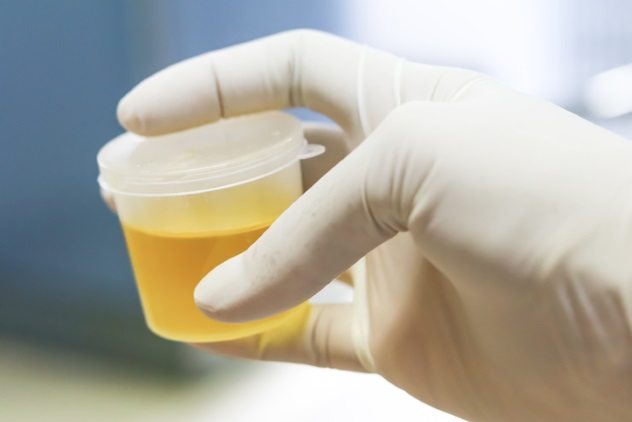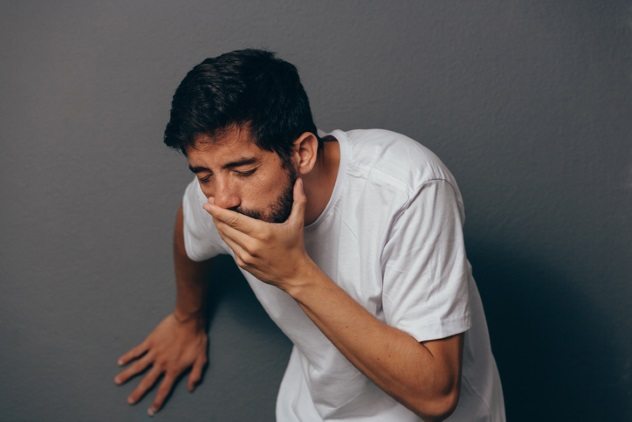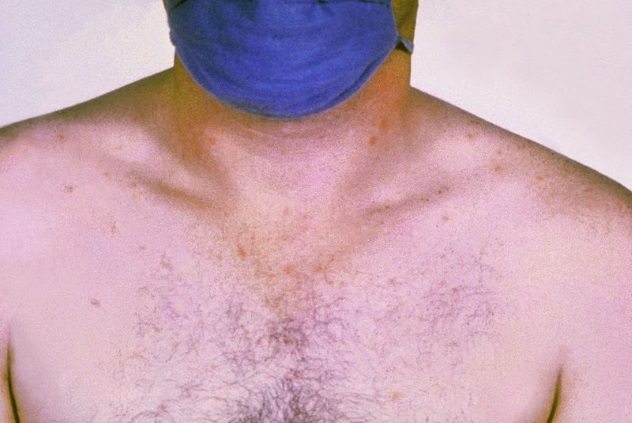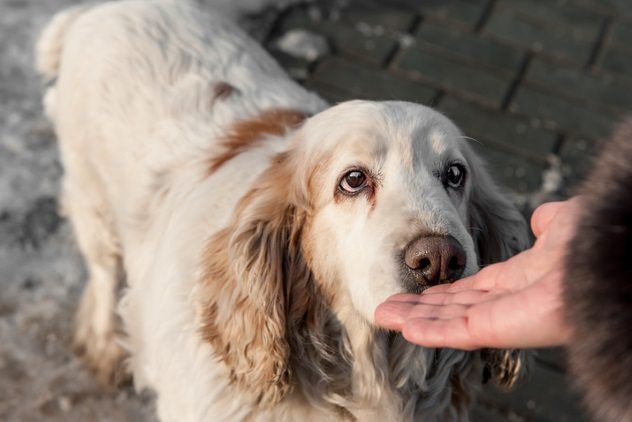 Technology
Technology  Technology
Technology  Humans
Humans 10 Everyday Human Behaviors That Are Actually Survival Instincts
 Animals
Animals 10 Animals That Humiliated and Harmed Historical Leaders
 History
History 10 Most Influential Protests in Modern History
 Creepy
Creepy 10 More Representations of Death from Myth, Legend, and Folktale
 Technology
Technology 10 Scientific Breakthroughs of 2025 That’ll Change Everything
 Our World
Our World 10 Ways Icelandic Culture Makes Other Countries Look Boring
 Misconceptions
Misconceptions 10 Common Misconceptions About the Victorian Era
 Mysteries
Mysteries 10 Strange Unexplained Mysteries of 2025
 Miscellaneous
Miscellaneous 10 of History’s Most Bell-Ringing Finishing Moves
 Technology
Technology Top 10 Everyday Tech Buzzwords That Hide a Darker Past
 Humans
Humans 10 Everyday Human Behaviors That Are Actually Survival Instincts
 Animals
Animals 10 Animals That Humiliated and Harmed Historical Leaders
Who's Behind Listverse?

Jamie Frater
Head Editor
Jamie founded Listverse due to an insatiable desire to share fascinating, obscure, and bizarre facts. He has been a guest speaker on numerous national radio and television stations and is a five time published author.
More About Us History
History 10 Most Influential Protests in Modern History
 Creepy
Creepy 10 More Representations of Death from Myth, Legend, and Folktale
 Technology
Technology 10 Scientific Breakthroughs of 2025 That’ll Change Everything
 Our World
Our World 10 Ways Icelandic Culture Makes Other Countries Look Boring
 Misconceptions
Misconceptions 10 Common Misconceptions About the Victorian Era
 Mysteries
Mysteries 10 Strange Unexplained Mysteries of 2025
 Miscellaneous
Miscellaneous 10 of History’s Most Bell-Ringing Finishing Moves
Top 10 Fascinating Diseases That You Can Smell
As a physician, you are taught to use all of your senses when entering the room to help determine the patient’s diagnosis. Certainly, doctors visually examine patients and uses things like stethoscopes to listen to heartbeats. While many wouldn’t readily think of smell as being one of the more important senses that physicians use, it can actually be extremely useful in diagnosing certain diseases and disorders.
Some of the diseases on this list emit extremely interesting scents that you would never expect. While some smells are more pleasant than others, the possibility of using a scent as a diagnostic criteria for disease is an extremely promising one. Other scents on this list require special sniffers to be picked up upon.
10 Diabetic Ketoacidosis

When diabetes is not managed correctly, the body cannot make enough insulin to store the glucose that we eat in our tissues. The inability of cells to utilize the glucose leads to a lack of the ability to create energy. When the body can no longer create energy from sugar, it switches to breaking down fat to make energy. The breakdown product of these fats is known as a ketone.
You may have heard of acetone during your last trip to the nail salon. What you may not know is that our bodies can actually make acetone through the breakdown of fats and the creation of ketone bodies. When diabetics’ sugars get extremely low, they can enter into a state called diabetic ketoacidosis. This occurs when ketone bodies levels rise to an extremely unsafe level.
Surprisingly, diabetic ketoacidosis can be detected by a certain kind of smell on the patient’s breath.[1] The acetone being created actually emits a fruity smell that can be picked up by humans. Not only can it be sensed by humans, but dogs can also be trained to pick up on this scent in order to alert the patients to their high blood sugar.
9 Maple Syrup Urine Disease

Imagine having a bathroom filled with the sweet smell of maple syrup every time you use the toilet. Well, people with the disorder known as maple syrup urine disease (MSUD) experience just that. This disease is an autosomal recessive metabolic disorder that affects the way that patients can break down certain amino acids. Patients with this disease are not able to correctly break down amino acids with branches including valine, leucine, and isoleucine. This means that these amino acids must exit the body through the urine, causing a distinct odor.[2]
While MSUD may sound extremely pleasant, it is actually anything but. Infants who are affected with the disease seem healthy at birth but rapidly deteriorate, eventually suffering from brain damage and death if their condition is left untreated. Later onset can lead to a continuum of symptoms ranging from weight loss and diarrhea to uninhibited behavior and hallucinations. The sweet-smelling urine can actually warn of an attack of these symptoms.
It is extremely important for patients to control their intake of branched amino acids, as they are found in many, many foods. There is currently no cure for the disease, but steps can be taken to control the severity of symptoms.
8 Migraines

Dogs seem to have the ability to be keenly sensitized to changes in their owners’ health. There was a study done by the University of Pittsburgh that looked into the behaviors that people’s dogs exhibited in response to a migraine. Migraine sufferers who owned dogs were recruited and completed a survey to see how their pets reacted to their migraines.
The study found that one in four migraine sufferers seem be able to recognize a noticeable change in their dog’s behavior up to two hours before the onset of their migraine. While this may sound extremely exciting, there was a lot of bias in the study, and the topic definitely requires a lot more investigation before any conclusions can be drawn.
Some patients who suffer from migraines do experience an aura, or prodrome, that occurs prior to the onset. This aura can include yawning, frequent urination, or neurologic symptoms. This allows sufferers to initiate early or prophylactic migraine treatment to prevent the migraine or reduce its severity.[3]
How exactly are these dogs “alerting” their owners, you ask? A small case series was completed of patients with dogs who sense their migraines, and there were a variety of reactions. One patient stated that her dog began barking, spinning in circles, and wagging its tail frantically. Another stated that their dog would whine and obsessively bump into them. Now, whether these are normal dog behaviors that coincidentally happen around migraines remains to be seen. Regardless, anyone who suffers from migraines knows how debilitating that they can be, and any early warning may allow them the time to get prophylactic treatment. The possibility of an “early warning system” is extremely exciting to those who struggle with frequent migraines.
7 Arsenic Poisoning

Arsenic is a chemical that has been used for hundreds of years for things ranging from pesticides to bullets. Another way that humans tend to come into contact with high levels of arsenic is through contamination of groundwater. In fact, people in a remote village in the Andes of Argentina actually appear to have developed a tolerance to arsenic levels 20 times the safe limit.
Over the centuries, arsenic has been used to poison kings, emperors, and prize-winning racehorses. Arsenic poisoning works by blocking enzymes that are essential for creating energy in our bodies. Symptoms of arsenic toxicity include vomiting, abdominal pain, encephalopathy, bloody diarrhea, and, eventually, death. One unique symptom that many have recorded following arsenic poisoning is that of a garlic odor emanating from the body of the victim. Interestingly, scientists have stumbled upon the discovery that garlic itself may be able to combat the effects of arsenic poisoning.
Arsenic is not the only poison to cause an odd odor to be released from a person. Cyanide poisoning has been recorded to cause the release of an almond-type odor from the victim.[4]
6 Phenylketonuria

If you’ve ever drunk a bottle of diet soda and noticed the warning that it contains phenylalanine, you may have wondered about the purpose of that warning. Phenylketonuria (PKU) is another inherited disorder where patients are unable to break down the amino acid phenylalanine. People with this disorder must be careful to avoid foods containing phenylalanine, such as those that contain the artificial sweetener aspartame, like diet soda.
If left untreated, PKU can lead to intellectual disability, seizures, and behavioral problems. Many countries actually have newborn screens for this disorder, allowing parents to start treatment early on. An interesting side effect from the buildup of phenylalanine is a musty odor that many describe as being “mouse-like.”[5] The disease was actually first described in 1934, thanks to this odor. A mother of two intellectually impaired children approached Dr. Asbjorn Folling, complaining of a strange odor being emitted from her kids. Urine samples were taken and studied, leading to the description of the disease.
5 Typhoid Fever

A medical journal article published in 1976 brought attention to the fact that patients with typhoid fever emit a smell that is extremely similar to freshly baked bread.[6] While smelling like a bakery may sound pretty cool, being afflicted with typhoid is actually anything but.
Typhoid fever is a bacterial infection caused by Salmonella Typhi. Its symptoms may vary from from very mild to severe. These symptoms include a gradual onset of high fever, weakness, abdominal pain, constipation, and a rose-colored skin rash. Typhoid is not an extremely common disease in the developed world but is still common in areas with poor sanitation and hygiene. The disease is treatable with antibiotics, but strains are becoming more resistant.
In addition to typhoid, other preventable diseases that have been associated with smells include the sweet-smelling diphtheria and the distinct “smallpox smell.”
4 Narcolepsy

Narcolepsy is an debilitating disease that causes patients to fall asleep at extremely inopportune times. In addition to this, sufferers may experience excessive sleepiness, hallucinations, sleep paralysis, or cataplexy, a loss of motor control when overstimulated. Even though these symptoms may sound unique, many people can go years without receiving the correct diagnosis.
Narcolepsy is caused by the loss of a brain chemical called hypocretin. Hypocretin comes from the hypothalamus and works in the brain as an alert system that keeps us awake and regulates our sleep. Much like migraines, narcolepsy is another disease that may cause us to emit a special odor.
One study collected sweat samples from patients with narcolepsy and controls and then presented them to two trained dogs. Neither the trainers nor the dogs knew which samples were which. In a majority of cases, the dogs were able to correctly point out the samples from the narcoleptics.
Mary McNeight, the director of training at the Service Dog Academy, says that the dogs have the ability to warn a patient up to five minutes before the onset of an attack. This time period is critical in allowing sufferers to sit or lie down, get to a safe location, tell a friend, or do other things that can minimize the harm of an attack. What is even more interesting is that the dogs are trained to place themselves in front of the patient so that they can drape their body over the dog versus falling on the ground. The dogs can also be trained to remind the patient to take their medications or provide balance as patients move to get their medications. While it is currently unknown what the compound is that causes the odor change, its an extremely promising discovery for those who suffer from narcolepsy.[7]
3 Bacterial Infections

Pseudomonas aeruginosa is a bacteria that can cause many types of infections in humans. It produces a characteristic blue-green color and is a common infection in those with diabetes, cystic fibrosis, burn patients, or drug users. This can be an extremely dangerous infection if it is not treated quickly, and it frequently wreaks havoc in hospital environments. It is considered an opportunistic bacteria, meaning that most of its infections occur after preexisting diseases or conditions. You may have in had a run-in with Pseudomonas if you have ever suffered from hot tub folliculitis.
There are ways to identify Pseudomonas in a laboratory, but one interesting characteristic that it possesses is that it actually produces an identifiable grape-like odor. The compound that is responsible for this interesting scent has been identified as 2-aminoacetophenone. While not a formal diagnostic criteria to identify Pseudomonas, 2-aminoacetophenone may prove to be extremely useful for identification, as it appears quite early in the growth cycle.[8] While Pseudomonas is most commonly known for its grape-like odor, some people describe its odor to be more similar to a tortilla.
Pseudomonas isn’t the only bacteria known to produce a distinct odor. For example, E. coli, a common cause of food poisoning, has been described as having a floral odor. Eikenella corrodens, the bacteria that commonly causes infection following a human bite, smells like bleach. Streptococcus anginosus, a bacteria that can cause abscesses, has a sweet caramel or butterscotch odor. These odors may seem pleasant, but I would not recommend sticking your nose too close to any of these potentially dangerous bacteria.
2 Schizophrenia

In the 1960s, nurses began commenting on an odd odor emanating from the back of mental hospitals. This prompted researchers to begin searching for the cause of this smell. It wasn’t long until Smith and Sines thought that they had stumbled upon the cause of the scent: schizophrenia. The smell was described as a “skunk-like” odor that remained in patients, especially those with catatonia, despite any amount of bathing.
A study was done on the sweat of patients with schizophrenia versus controls. The study showed that a panel of human odor testers as well as trained rats could reliably sense this unknown odor in the sweat of patients with schizophrenia. A few years later, Smith and Sines identified the compound responsible to be trans-3-methyl-2-hexenoic acid (TMHA) through various lab techniques.[9]
At the time, this was a revolutionary discovery. Finding a biologic link to mental illness that can be readily identified was a huge headline. This led to a witch hunt in the early 1970s for the “endogenous schizotoxin” that many thought may even cause the disorder. Other scientists quickly jumped on this exciting bandwagon, yet no one else seemed to be able to confirm the link. In 1973, the original team even tried to replicate their own results without success. Just like that, the ground-breaking schizophrenic odor was dead. Now, we do know that TMHA is a large component of sweat, especially in Caucasians, but no link to mental illness has been confirmed.
In 2005, the odor appeared to rear its head again as a research team seemed to have found that a global variation in body odor may be unique to those with schizophrenia rather than a single compound. There have yet to be any follow-up investigations or replications of this study.
1 Parkinson’s Disease

Joy Milne began noticing a very interesting smell that her husband Les was emitting around 1975. She would continuously tell him that he hadn’t showered or brushed his teeth properly when, in fact, he had. She was convinced that he smelled differently, but he became upset at her constant nagging. It was only until a decade later that Joy finally realized exactly what she was smelling.
Les was diagnosed with Parkinson’s disease at the age of 45. This disease is a neurodegenerative disorder resulting from a loss of the neurons that produce the neurotransmitter dopamine. This leads to tremor, slow movement, rigidity, and problems walking in patients. There is currently no cure for Parkinson’s, but there are treatments available to reduce the severity of symptoms.[10]
Even more importantly, there is also no current definitive test for the disease other than simply observing patients with symptoms. The retired nurse only realized that Parkinson’s was the musky odor she was smelling after meeting more patients with the disease at a support group.
Currently, studies are being run on the veracity of Joy’s ability with great results. She was able to correctly identify all of the patients with Parkinson’s after being given six T-shirts from patients with the disease and six without. She did, however, identify one of the controls as having Parkinson’s. The patient that she “incorrectly identified” actually ended up being diagnosed three months later.
Joy is currently a part of studies trying to find the compound causing the odd odor that she can pick up on. Dr. Kunath and Professor Perdita Barran are using mass spectrometry to identify ten molecules that are unique to patients with Parkinson’s. While there is still much work to be done, this is an exciting start to creating a new diagnostic test for Parkinson’s.
+ Cancer

Researchers are continuously searching for ways to be able to find cancer in its early stages. This can be critical to a good prognosis in some patients. There is still much to be learned about cancer and what it does to our bodies, but changing our body odor seems to be one of the many ways it affects us. Many are familiar about the incredible smelling ability of dogs, which helps us in tasks ranging from finding drugs to finding humans. Few realize, however, just how useful dogs’ sense of smell can be.
One of these dogs is named Lucy, a Labrador Retriever and Irish Water Spaniel mix who was kicked out of guide dog school due to her overzealous sense of smell. Her owners decided to utilize her remarkable sense of smell by training her to smell cancer. Over seven years, Lucy was able to find bladder, kidney, and prostate cancer. Now Lucy is part of one of the largest canine cancer detection clinical trials.
Medical Detection Dogs is an organization made up of eight dogs who use human urine to figure out if humans have cancer through scent. The founder, Claire Guest, says she started the group after her Labrador, Daisy, picked up on breast cancer that was very deep in her breast.
One of the earliest-recorded cases of dogs being able to sniff out cancer is from doctors at King’s College. In 1989, they wrote about a woman whose dog persistently kept sniffing a mole on her leg, which turned out the be a very early-stage malignancy.
It is thought that the dogs are picking up on alkanes or aromatic compounds that are synthesized by malignancies. These volatile compounds can then be sensed by dogs in human urine or breath.
Despite the idea being a sensational news headline, researchers are finding it difficult to get funding. Research that has been done shows some strong evidence toward confirming the dogs’ abilities. Many are skeptical about the practical and clinical applications as well as the array of possible confounders in the studies.[11]
Shelby is currently a third-year medical student. While she doesn’t have much free time, she still enjoys writing top 10 lists when inspiration strikes.
Read about more atypical methods of diagnosis on Top 10 Crazy Ways Of Detecting Disease and 10 Animals That Can Detect What Humans Can’t.








